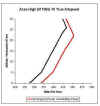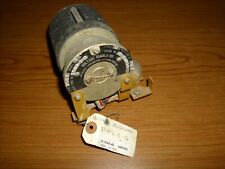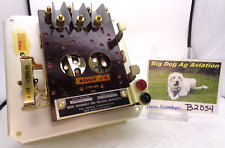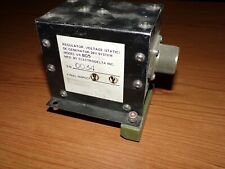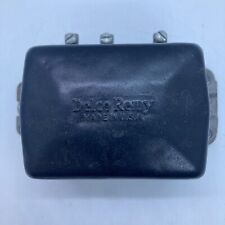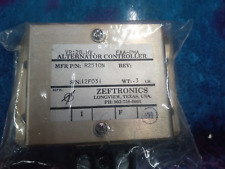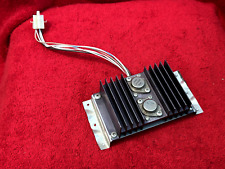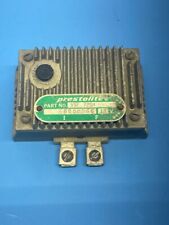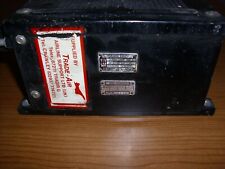by Andy Bush
Be sure to read all of the parts of this series
[ Boom and Zoom, Part One ][ Part Two ][ Part Three ][ Part Four ]
Introduction
In the hot and humid morning air, the Sidewinder snaked towards one of two MiG-17s. The pair of F-4Es had run a perfect stern conversion intercept on the bandit flight. Ground clutter prevented the AIM-7 shot…but the lead F-4 pilot took that in stride…he wasn’t that keen on using the “Great White Hope,” given the lousy kill percentage that the missile had.
“Splash one,” Lead called as his heat seeker impacted the MiG-17. The MiG immediately broke into a smear of flame. The second MiG continued straight ahead for a second or two…almost as if the pilot had been stunned into inaction. Then it broke hard left…away from the F-4 flight as it happened…the MiG driver apparently thought a defensive break was a better idea than continuing to look for a threat that, until a second earlier, he had no idea was anywhere near.
“Shit hot,” thought the F-4 lead as the MiG broke the wrong way. All this did was make it easier for the lead to solve the angles. The Lead turned hard into the MiG and pulled his nose out into lead. He reached down to select his gun and verified his gunsight in A2A mode. His plan was to arc the MiG to close the distance and then yo-yo off into a gun track position.
Unfortunately, Lead had never seen a MiG-17 turn with a terrified pilot pulling on the pole. The MiG almost appeared to be swapping ends as it continued its max performance level turn. Seeing his neat little game plan going down the toilet, Lead shoved the throttles into burner and pulled his nose further into lead. “Going guns”, he radioed his wingman who was lagging the turn to the outside. Lead set his pipper in the plane of motion of the MiG and eased the stick forward to get about the one G firing conditions he was looking for.
But as the MiG moved towards the HUD, its rate of turn changed what would have been a 90-degree deflection shot into a front quarter snap shot. This caught Lead again by surprise. He pulled the trigger, but even as the Gatling spun up, he knew he was too late. It was time for the lead to get back into the driver’s seat…so far the MiG had managed to evade his attack.
The Lead had made his share of mistakes for the day…he knew continuing to maneuver with the 17 was an exercise in futility. It was “back to the text book” time, and out of it, Lead pulled the chapter on energy fighting. He leveled his wings, selected full AB, and pulled back on the stick to rotate right on the steady AOA tone for best turn performance. As his nose reached the vertical, he relaxed his G and pirouetted to keep the MiG in sight. He eyeballed his slant range for the pulldown, and then made a final roll adjustment to aim his lift vector well in front of the still turning MiG. Then it was back on the stick again to the tone and pull the nose down into the re-attack.
Well…we’ll leave this story for some other time while we look at the tactical decisions that the F-4 pilot made. What was this chapter that he was thinking of? What is an “energy fight”? That is what this article is going to look at. Many of us use similar concepts when we fly our favorite sim. In the flight sim community, this tactic is known as the Boom and Zoom maneuver, or BnZ for short.
Background
If you have read any of my articles before, you know what’s coming now!! Yep…it’s time for a little academics! A successful BnZ attack is going to come as the result of two things…knowing when to fly the maneuver and knowing how to fly the maneuver. Let’s start off with a look at when such a maneuver would be necessary in the first place.
We have this maneuver in our clue bag mainly because we can put our A2A maneuvering into one of two basic categories with respect to our adversary.
One category is when our fighter “turns better but accelerates worse” than our adversary. In this case, we refer to our fighter as an angles fighter. The second category is when we “turn worse but accelerate better” than our adversary…that makes us an energy fighter when compared to him.
Turning Performance
A word or two on this subject may be helpful. There are two types of turn performance…turn rate and turn radius. Turn rate means how fast it takes to turn a given number of degrees…this value is expressed in number of degrees per second. In our example above, the F-4 could sustain a maximum turn rate of about 10-12 degrees second under ideal conditions.
Turn radius is self-explanatory…if a fighter were to fly a constant airspeed and constant G circle, the radius of that circle would be his turn radius.
The key to your appreciation of turn performance is understanding that turn rate and radius are only a function of airspeed and G. The winning combination is that of maximum G at minimum speed to produce the greatest rate with the minimum radius.
One other factor worth mentioning in this turning performance discussion is wing loading. Wing loading in simple terms considers the lifting area of the wing (in square feet) and relates that to the gross weight of the aircraft…we end up with wing loading being measured in pounds per square foot. The less weight that a wing has to support allows it to generate G at a slower airspeed. A good example can be found when comparing the P-40 to the Japanese Zero. The weight difference here was over 2,000 pounds, the P-40 being the heavier aircraft. The end result was that the P-40 was unable to match the slow speed turning performance of the Zero…if the P-40 tried to slow down to match the turn radius of the Zero, it could no longer sustain the same G as the Zero. Consequently, the Zero had a higher turn rate and could, and did, get on the P-40’s tail easily in a turning contest.
The next diagram is a simplified illustration of differences in turn rate and radius. The P-40 is unable to match the slower Zero’s smaller turn radius and higher turn rate. In approximately two turns, the Zero is gaining the advantage on the P-40.
Acceleration Performance
With regard to this factor, we are talking both acceleration (ability to increase speed over time…knots per second), as well as top speed (knots per hour). In general, when we talk BnZ capability, we consider top speed more important than acceleration.
Bottom Line…an angles fighter is one that can generate a higher turn rate at a slower airspeed than the aircraft it is being compared to…and an energy fighter is one that can accelerate to a faster top speed than its opponent. In our sim world, we often refer to the angles fight as a “turn and burn” (TnB) and the energy fight as the “boom and zoom” (BnZ).
Remember…the terms are relative only when making comparisons. It is entirely possible for a specific fighter type to be both, depending on its opponent. For example, the P-38 would be an energy fighter when compared to a Zero and an angles fighter when compared to a Me-110.
All right! As is commonly asked these days, “Can’t we move on?.” And the answer is “Most definitely!” Let’s get away from the academics and spend the rest of the time talking BnZ tips, techniques, and considerations.
Performance Comparisons and the BnZ Attack
One excellent way to examine energy tactics is to study performance specifications for a given sim’s aircraft. The online sim Aces High publishes top speed and maximum rate of climb numbers for all of its fighters. Other sims such as MiG Alley include energy comparison diagrams in their manuals. Lastly, some sims benefit from after-market strategy guides that include performance data…of these, the MS CFS guide is a good example.
My good friend Leon Smith has let me use the next figure to show how a Spitfire matches up against a P-51. This figure clearly shows how the P-51 enjoys an airspeed and energy advantage over the Spitfire. The two curves intersect at about 250 mph. Below that airspeed the Spitfire has the advantage…above it, the P-51 does. Comparison diagrams such as this make it easy to identify the areas of best performance for your particular aircraft.








